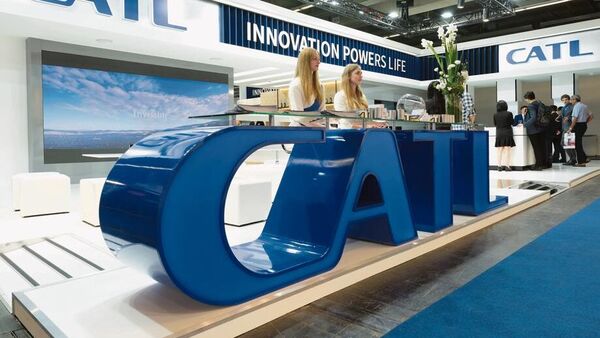The world’s largest battery maker doesn’t need Ford or Tesla. It’s global carmakers, desperate to go electric quickly, that need the Chinese behemoth. In recent months, news that Contemporary Amperex Technology Company, or CATL, will make its way to US soil with partners like Ford and Tesla has rustled feathers. The increasing number of automakers turning to this Chinese firm that has dominated the market for years raises a broader question: How did a single company manage to position itself as such a critical cog, with the world so dependent on it? Even though few are willing to accept this reality, CATL’s strong hold comes from more than just size. Its batteries are in Teslas, Mercedes and many other EVs. The Fujian-based firm has backed realistic technology, carved out targeted partnerships and tapped viable markets for production at ever-lower prices. The ways it scaled products and its facilities are key: licensing intellectual property and taking minority stakes. Where possible, CATL has built huge factories and invested in raw material mines for a grip on supplies. The firm has gone deeper into the value chain and backed small EV companies, too.
That’s led to a sprawling global empire of partners and plants that have made CATL all but indispensable to the global electrification drive. Last year, overseas revenue rose 176% and accounted for almost a quarter of its sales. In Japan, CATL tied up with Toyota subsidiary Daihatsu to supply EV batteries. In Indonesia, it has invested almost $6 billion into state-owned nickel miners. That’s another astute move; Tesla and Ford are also flocking there. In Thailand, where EVs have lagged, CATL is licensing proprietary technology to Arun Plus, a subsidiary of PTT. The state-owned oil and gas major has been pushing EVs, tying up with Hon Hai Precision Industry, also known as Foxconn, and committing $1 billion for a new plant. In Bolivia, CATL is helping tap reserves of lithium.
CATL’s most ambitious international projects are in Europe, where regulatory tightening has accelerated EV adoption. The company has plants in Hungary and Germany and is considering a third in the region. Hundreds of people are being hired to work at these factories. While no priority, the US hasn’t been completely ignored either. In 2020, CATL bought a facility in Glasgow, Kentucky, investing almost $100 million well before the US Inflation Reduction Act spurred a battery factory boom, with plans to hire around 350 workers. Almost a third of this capital qualified under the Kentucky Business Investment programme. Two years prior, the company had opened a sales outpost in Detroit, the first in North America.
It’s simplistic to attribute CATL’s rise to Beijing’s helping hand. That alone doesn’t explain how it became so crucial in the automobile and EV supply chain. As is evident from the efforts of other manufacturers, making good batteries at scale isn’t a cakewalk. Beijing’s generous grants and subsidies focused on batteries helped, no doubt. However, they only make up a relatively small portion of growing revenues. And, the reality is, other companies have also been beneficiaries of the state’s largesse. That doesn’t give CATL a massive advantage over domestic firms.
Each plant CATL now builds costs less, and the raw materials and parts supply are effectively captive while it keeps a firm grip on research and development activities. Battery production capacity is estimated to rise to 800 gigawatt hours by the end of next year, more than double at the end of 2022. The company spent just over 48 billion yuan ($6.97 billion) to do so and has astutely restructured commodity pricing contracts, helping margins. With over 5,500 domestic and 1,065 international patents, CATL has been fiercely protective of its intellectual property, waging legal battles to keep a tight hold.
This expansion hasn’t come without pain. CATL’s gross margins have halved in the past six years from a heady 43.7% in 2017 to a still high-20% as of December. However, that was always going to be the balance it had to strike: margins versus market share. Investors have long been concerned about that erosion and whether it will eventually hinder growth, so CATL recently rejigged how it prices batteries. That will help push costs down more broadly.
The other issue is the hand that helped it. With this dominant position, CATL is walking a fine line with Beijing and its antipathy toward too-big private firms. But then again, a large, legitimate hard-technology giant with a globally important product is what China always wanted—a key lever in its relationship with the US.
At this pace and with its tentacles firmly embedded across the world, it’s hard to see CATL replaced or replicated by another company anytime soon.
Anjani Trivedi is a Bloomberg Opinion columnist covering industrials across Asia Pacific
Download The Mint News App to get Daily Market Updates.
More
Less
#Chinas #CATL #tight #grip #global #transition #EVs
